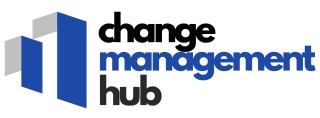The Importance of Trade Spend in Business Revamps
Effectively managing trade spend is pivotal in steering successful business transformation efforts. As companies navigate the competitive landscape, they often undergo various levels of transformation to stay relevant and profitable. At the heart of such transformations, trade spend plays a crucial role in shaping sales and promotional strategies that directly impact a company's bottom line.
In the consumer packaged goods (CPG) sector, where market share battles are won or lost on retail shelves, understanding the intricacies of trade promotion is essential. Marketing teams often allocate significant budgets towards enhancing supplier performance management and driving consumer engagement through effective promotions. These promotional activities can range from product discounts to in-store displays.
However, managing trade spend is not simply about dispensing funds for promotions. It requires meticulous planning and data-driven strategies to maximize return on investment (ROI). An effective trade spend management process involves continuous monitoring and adaptation based on real-time analytics and performance data. This ensures promotional activities are aligned with both short-term sales targets and long-term market positioning goals.
For CPG brands, optimizing trade spend is crucial to achieving incremental sales and improving spend effectiveness. By leveraging data insights, companies can make informed decisions that enhance promotion management and foster stronger retailer partnerships. The synergy between trade spending strategies and stakeholder engagement can significantly influence consumer behavior and brand loyalty in the dynamic retail environment.
Challenges in Managing Trade Spend During Change
Overcoming Obstacles in Trade Spend Management
Managing trade spend during periods of change can be a daunting task for businesses, especially in the consumer packaged goods (CPG) sector. The dynamic nature of trade promotions, coupled with the need for effective spend management, presents several challenges that can impact both short-term and long-term business performance.
One of the primary challenges is the lack of real-time data and analytics. Without timely insights, companies struggle to make informed decisions about promotional activities, which can lead to ineffective spending and reduced return on investment (ROI). This is particularly problematic for CPG brands that rely heavily on trade promotions to drive incremental sales and gain market share.
Another significant hurdle is the complexity of coordinating with multiple stakeholders, including retailers and marketing teams. Ensuring alignment in planning and execution of trade promotions requires seamless communication and collaboration, which can be disrupted during organizational changes.
Moreover, the pressure to maintain or improve sales performance during transitions often leads to increased promotional spending without a clear strategy for optimizing trade spend. This can result in diminished effectiveness of promotions and a negative impact on the overall ROI.
To navigate these challenges, companies must adopt a data-driven approach to trade spend management. Leveraging advanced analytics can provide valuable insights into consumer behavior and promotional effectiveness, enabling businesses to make strategic adjustments in real time. Additionally, fostering strong relationships with retailers and other stakeholders is crucial for successful promotion management.
For more insights on managing trade spend effectively during change, consider exploring the importance of criticality numbers in change management.
Strategies for Optimizing Trade Spend
Effective Techniques for Streamlining Resources
In the world of business transformation, optimizing trade spend is crucial for achieving both short-term gains and long-term success. Promotion management plays a pivotal role in managing trade spends effectively, allowing businesses to channel their resources into initiatives that yield positive results.
An essential strategy involves analyzing real-time data to enhance decision making. By employing advanced analytics, companies can better understand consumer behaviors and trends, thus aligning their promotional activities with market demands. This approach enhances the return on investment, ensuring that each dollar spent contributes to incremental sales and improved market share.
Additionally, data-driven planning is vital for optimizing trade promotions. Retailers and CPG brands can evaluate promotional performance by scrutinizing past data and making informed forecasts. This proactive method aids in refining promotional strategies, leading to improved ROI and heightened spending effectiveness.
Moreover, maintaining a collaborative approach with retailers and refining promotion strategies ensures that all stakeholders are on board, thus enhancing overall promotional effectiveness. Engaging with partners closely facilitates better planning and execution of promotions, which is fundamental for long-term success.
The Impact of Trade Spend on Stakeholder Engagement
The Unspoken Significance of Trade Spend in Stakeholder Engagement
The effectiveness of trade spend is not only about dollars and percentages; it's deeply intertwined with stakeholder engagement. When a company initiates a promotion, the promotional activities are not solely targeted at enticing consumers but are also crafted to align with the expectations and needs of various stakeholders. Understanding who these stakeholders are and what they want can profoundly influence the outcome of trade promotions.
Substantial trade spending goes into building products' market share, which in turn aims to capture the interest of retailers and ensure long-term collaboration. Retailers, being crucial stakeholders, expect convincing trade spend outcomes. They look for solid ROI and evidence of incremental sales. This is where effective trade spend management comes into play.
A well-planned trade promotion can provide a thrilling boost to sales performance. It creates a ripple effect where successful promotional campaigns lead to increased retailer satisfaction and better retail placement. This in return reinforces the relationship between CPG brands and their retail partners.
To achieve optimized performance, decisions on trades must be grounded in real-time data analytics and trusted promotional data insights. By adopting a data-driven approach, organizations can transform stakeholder experiences, using predictive analytics to plan and allocate resources effectively.
Additionally, promotional planning goes beyond managing trade costs. It involves understanding consumer buying behaviors and utilizing this information to make informed decision-making processes more streamlined. This transparency and strategic coherence increase the engagement of stakeholders, driving not only short-term sales success but ensuring long-term collaborative growth and sustained market presence.
Leveraging Technology for Trade Spend Efficiency
Embracing Digital Tools for Enhanced Efficiency
In the world of change management, leveraging technology is paramount for optimizing trade spend. The integration of advanced analytics and real-time data tools can significantly improve the management of promotional activities. By deploying cutting-edge trade promotion analytics, companies can track the performance of their sales promotions and adjust strategies to maximize ROI and consumer engagement.
Recent developments in data-driven technology allow for better spend management, enabling CPG brands to analyze market share fluctuations and optimize trade spending. With robust data solutions, businesses can predict consumer behavior and tailor their marketing efforts accordingly.
Moreover, these technological advancements help in refining promotional strategies to boost incremental sales and long-term brand loyalty. Employing sophisticated planning tools aids in making informed decisions, ultimately leading to effective promotional spending and substantial return on investment.
Apps offering real-time monitoring of trade promotions are revolutionizing how retailers and CPG companies execute their core tasks and engage with their consumer base. By integrating these technologies, businesses can ensure their promotional activities are not just efficient but continuously evolving with market trends.
By investing in high-tech solutions, companies can streamline their operations and align their marketing efforts with overall business transformation goals. This not only enhances the impact of trade promotions but also increases the efficacy of change management strategies across the board. In doing so, firms can position themselves as leaders in retail innovation, equipped to tackle future challenges with agility and precision.
Case Studies: Successful Trade Spend Management in Change
Real-World Examples of Trade Spend Success
In the complex landscape of trade spending, numerous companies have successfully navigated the challenges and emerged with strengthened market positions. By examining these real-world examples, companies can glean insights into effective trade spend management, particularly during periods of change.
One standout example from a leading CPG brand involved utilizing data driven strategies to streamline their trade promotions. The company embraced advanced analytics to gain a comprehensive view of their promotional activities, resulting in improved incremental sales. By focusing on real time data, they managed to enhance their ROI from trade promotions, increasing the overall value of their spending.
Another significant case study hails from the retail sector, where a company leveraged their trade spend to boost consumer engagement through targeted promotions. With the help of precise data analytics, they were able to tailor promotions to specific consumer groups, which not only improved spending effectiveness but also captured larger market share in a short term period.
A third example points to a successful strategy in collaboration with retailers. By aligning their promotional calendars and objectives with those of their retail partners, a company in the product sector was able to optimize trade spend significantly. This collaboration fostered a shared vision that benefited both the retailers and the brand, demonstrating effective spend management during times of transformation.
Trade spend management, when approached methodically and creatively, can indeed offer substantial rewards. These cases highlight the importance of planning and performance monitoring, underscoring how well-executed strategies lead to long term gains. Through investing in promotional effectiveness and embracing analytics, businesses can transform their trade strategies, ultimately enhancing stakeholder engagement and achieving business transformation.














